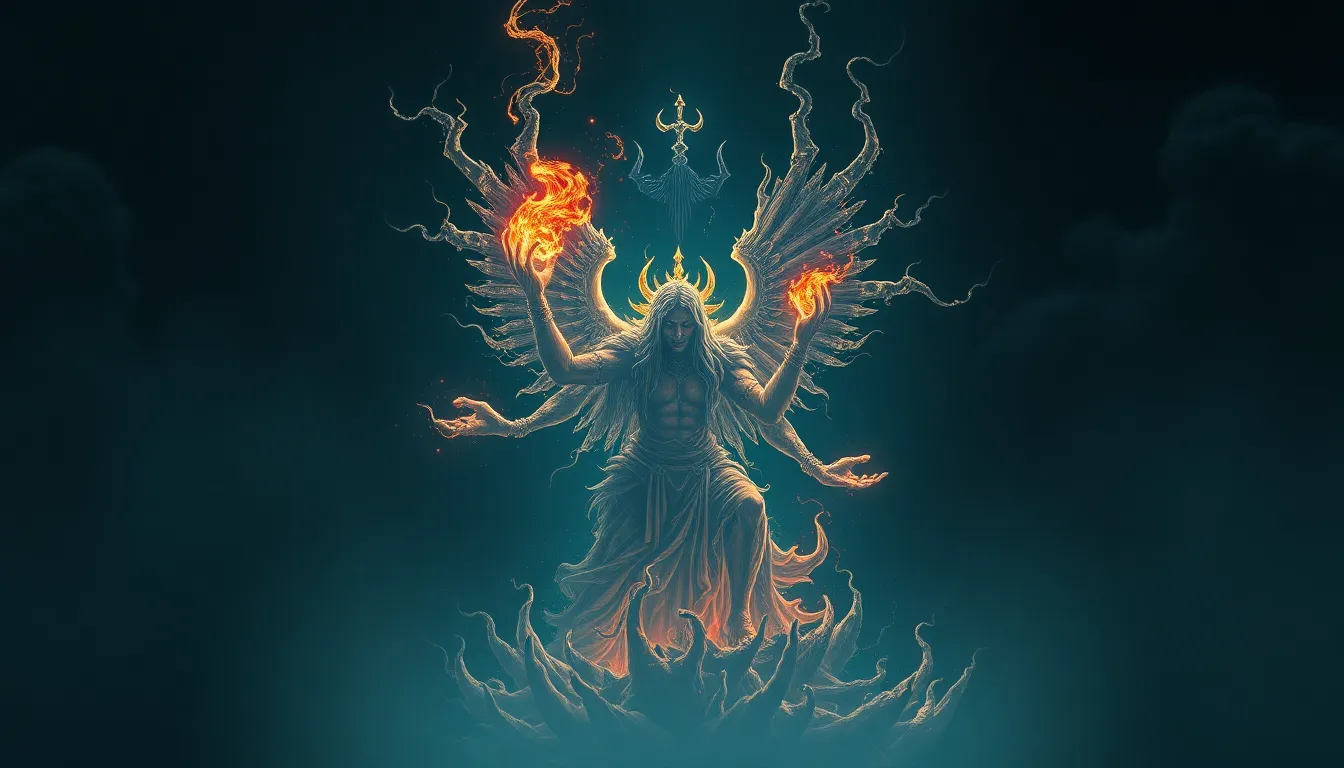The Sacred Kiwi: Unique Myths from Down Under
I. Introduction
The kiwi, a flightless bird native to New Zealand, has become an enduring national symbol, embodying the unique identity of the country and its people. This small, nocturnal bird is not only iconic for its appearance but also rich in cultural significance, particularly within Māori traditions. Myths and legends surrounding the kiwi play a crucial role in New Zealand culture, serving as vessels for storytelling and preserving history. This article explores the various myths associated with the kiwi, highlighting their importance in Māori heritage and contemporary New Zealand identity.
II. The Kiwi Bird: A National Icon
A. Description and Characteristics of the Kiwi
The kiwi is a distinctive bird with a long beak, small wings, and a round body covered in brown, hair-like feathers. It stands about 30 to 50 centimeters tall and weighs between 1.5 to 3.5 kilograms. Kiwis are nocturnal and are known for their keen sense of smell, which they use to forage for insects and worms in the soil.
B. The Kiwi’s Role in New Zealand’s Ecosystem
Kiwis play a vital role in New Zealand’s ecosystem as ground-dwelling birds that help aerate the soil while searching for food. Their foraging habits contribute to nutrient cycling, and they are an important part of the New Zealand forest ecosystem.
C. Cultural Significance in Māori Heritage
In Māori culture, the kiwi holds a special place as a symbol of resilience and uniqueness. It is often associated with the spirit of the land and is celebrated in various cultural narratives and ceremonies.
III. Origins of Kiwi Myths and Legends
A. Historical Context of Māori Oral Traditions
The Māori people have a rich tradition of oral storytelling, which has been passed down through generations. These stories serve to educate and entertain while preserving the history and values of the Māori culture.
B. The Role of Storytelling in Preserving Culture
Storytelling is an integral part of Māori identity, allowing the community to maintain a connection to their ancestry and heritage. Myths involving the kiwi often encompass themes of creation, morality, and the natural world.
C. Themes Commonly Found in Kiwi Myths
- Creation and origin
- Resilience and adaptability
- Spiritual connection to the land
- Lessons in morality and ethics
IV. Creation Myths Involving the Kiwi
A. Myths About the Creation of the Kiwi Bird
There are several creation myths that speak to the origins of the kiwi. One such tale describes how the kiwi was formed from the earth and imbued with the spirit of the land, symbolizing the deep connection between the bird and the natural world.
B. The Kiwi’s Connection to Māori Creation Stories
The kiwi features prominently in Māori creation stories, symbolizing the unique attributes of New Zealand itself. In some tales, the kiwi is seen as a guardian of the forest, ensuring the balance of life within its ecosystem.
C. Symbolism of the Kiwi in the Creation Process
The kiwi represents not only the physical characteristics of New Zealand but also the spiritual essence of the land. It embodies the idea of new beginnings and the importance of nurturing the environment.
V. The Kiwi in Māori Folklore
A. Notable Legends Featuring the Kiwi
Several legends feature the kiwi as a central character, including tales that describe its adventures and interactions with other animals. These stories often reflect the values and beliefs of the Māori people.
B. The Kiwi as a Symbol of Protection and Guidance
In folklore, the kiwi is often portrayed as a protector and guide for those who respect the land. It serves as a reminder of the importance of living in harmony with nature.
C. Lessons and Morals Derived from Kiwi Myths
- The importance of respecting nature
- Understanding one’s place in the ecosystem
- Valuing resilience in the face of adversity
VI. The Kiwi as a Spiritual Messenger
A. Beliefs Surrounding the Kiwi in Spiritual Practices
Many Māori believe that the kiwi serves as a spiritual messenger, conveying messages from the ancestors. Sightings of the kiwi are often interpreted as signs of guidance or warnings from the spirit world.
B. The Role of Kiwis in Rituals and Ceremonies
Kiwis are sometimes incorporated into rituals and ceremonies, symbolizing the connection between the physical and spiritual realms. Their presence is believed to enhance the significance of these events.
C. Interpretations of Kiwi Sightings in Māori Culture
In Māori culture, encountering a kiwi can carry various meanings, often seen as a positive omen or a reminder to stay connected to one’s roots and the environment.
VII. Modern Interpretations of Kiwi Myths
A. How Contemporary Indigenous Artists Portray the Kiwi
Modern indigenous artists often depict the kiwi in their works, using it as a symbol of cultural pride and identity. These representations can be found in paintings, sculptures, and digital media, showcasing the ongoing relevance of the kiwi in Māori culture.
B. The Influence of Kiwi Myths on Modern New Zealand Identity
The kiwi continues to shape New Zealand’s national identity, becoming synonymous with the spirit of the country and its people. It is celebrated in various forms of media, sports, and tourism.
C. Kiwi Myths in Literature and Popular Culture
Kiwi myths have found their way into literature and popular culture, inspiring stories, films, and art that highlight the significance of this unique bird and its connection to New Zealand’s heritage.
VIII. Conservation Efforts and Their Cultural Significance
A. Threats to the Kiwi Population
The kiwi population faces numerous threats, including habitat loss, predation by introduced species, and human encroachment. Conservation efforts are crucial in protecting this iconic bird.
B. Connections Between Myths and Conservation Efforts
Many conservation initiatives draw upon Māori myths and beliefs, emphasizing the spiritual connection to the kiwi and the land. These stories inspire community involvement in conservation efforts.
C. The Role of Community in Protecting the Kiwi
Community-driven conservation projects are vital for the survival of the kiwi. Local groups work together to raise awareness, educate the public, and implement protective measures for the kiwi and its habitat.
IX. Global Perceptions of the Kiwi Mythology
A. How Kiwi Myths are Viewed Outside of New Zealand
Globally, kiwi myths are often viewed as fascinating insights into Māori culture and New Zealand’s natural heritage. They provide a window into the values and beliefs of indigenous peoples.
B. The Impact of Globalization on Indigenous Stories
Globalization has allowed for greater exposure of Māori myths to an international audience, but it also poses risks of cultural appropriation and misrepresentation. It is crucial to approach these stories with respect and understanding.
C. Efforts to Share Kiwi Myths with International Audiences
Various initiatives aim to share Kiwi myths with global audiences, including cultural festivals, educational programs, and digital media, fostering appreciation for New Zealand’s indigenous heritage.
X. Conclusion
A. Summary of the Importance of Kiwi Myths
Kiwi myths are a vital part of New Zealand’s cultural landscape, providing insight into the values, beliefs, and identity of the Māori people. They serve as a bridge between the past and present, encouraging respect for nature and community.
B. Reflection on the Role of Myths in Cultural Identity
As New Zealand continues to evolve, the myths surrounding the kiwi remain a powerful reminder of the importance of cultural heritage, community, and the natural world. Embracing these stories ensures that the spirit of the kiwi will endure for generations to come.




